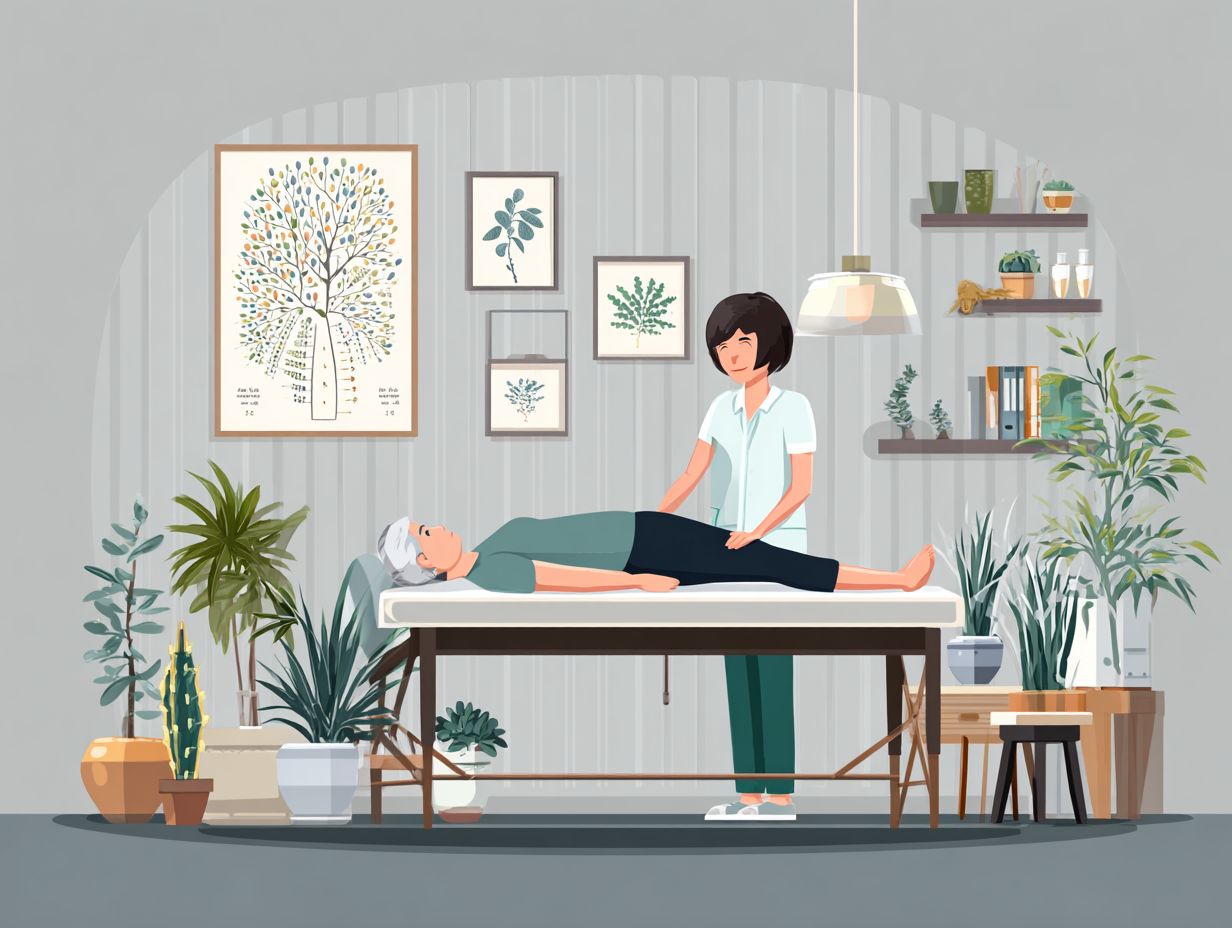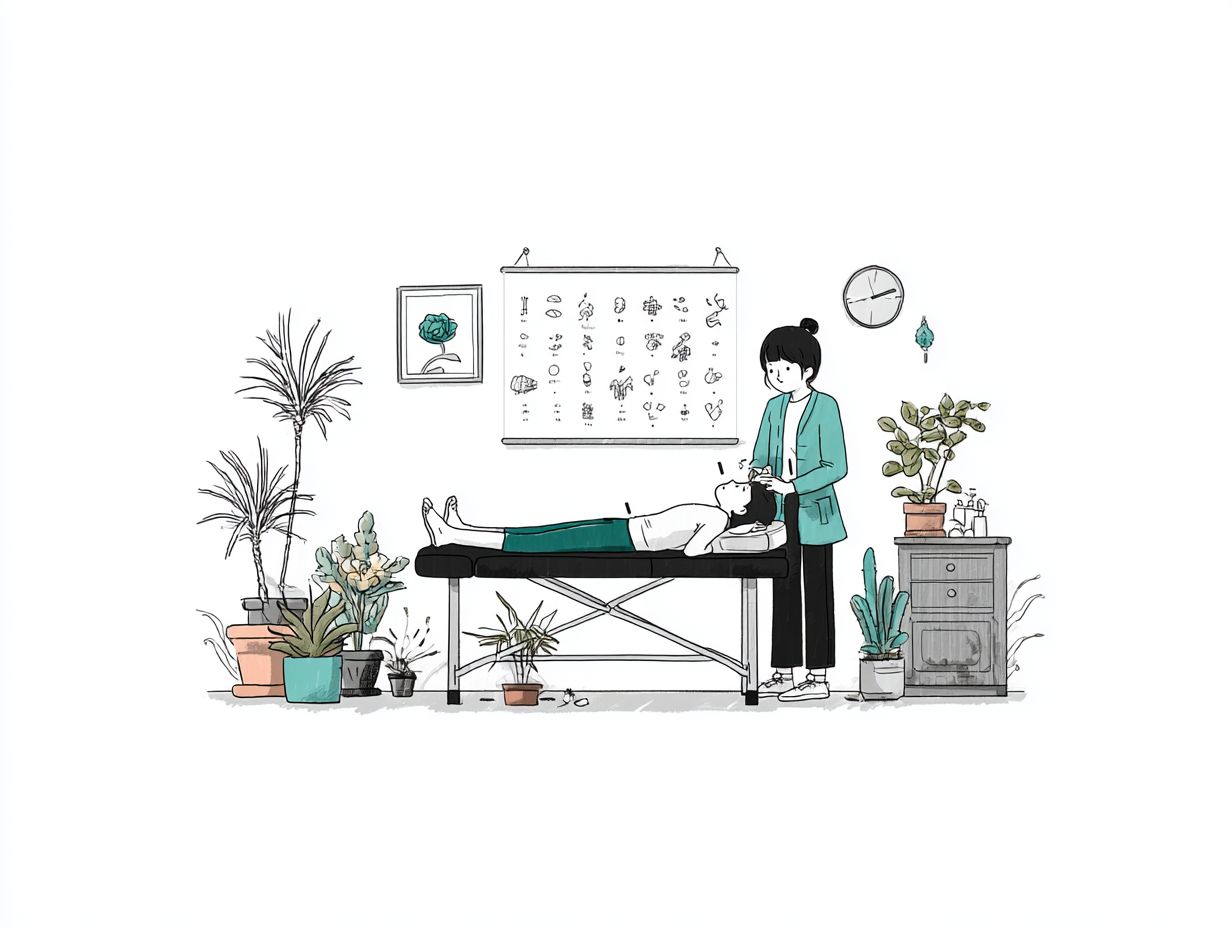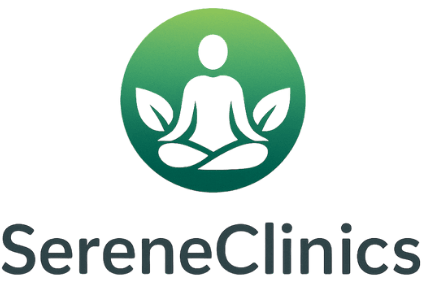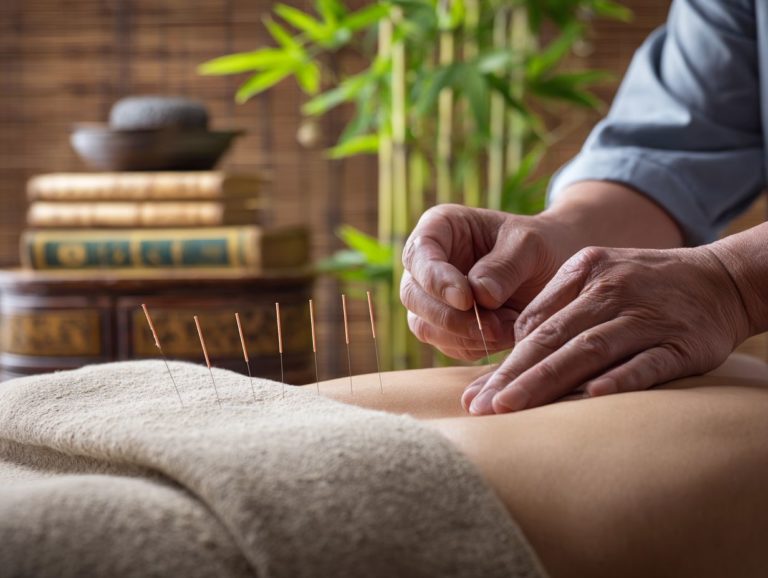Acupuncture: Integration with Western Medicine Explained
Acupuncture, a key aspect of Traditional Chinese medicine, is gaining traction as an effective complement to Western medicine. This approach in integrative medicine uses thin needles to tackle different health problems, combining old knowledge with current methods. This article discusses the benefits of acupuncture, especially Western medical acupuncture, in improving patient care and wellness. It also addresses the difficulties in incorporating acupuncture into healthcare. Learn how these two healing approaches can be combined for the best health results.
Key Takeaways:
Contents
- 1 Understanding Western Medicine
- 2 Mechanisms of Acupuncture
- 3 Acupuncture and Western Medicine Statistics
- 4 Benefits of Integrating Acupuncture with Western Medicine
- 5 Case Studies of Integration
- 6 Challenges in Integration
- 7 **The Use of Acupuncture in Western Medicine Going Forward**
- 8 Frequently Asked Questions
- 8.1 What is acupuncture and how does it integrate with Western medicine?
- 8.2 What are the benefits of integrating acupuncture with Western medicine?
- 8.3 Is acupuncture considered a safe practice when integrated with Western medicine?
- 8.4 How does acupuncture work when integrated with Western medicine?
- 8.5 Can acupuncture be used to treat specific medical conditions when integrated with Western medicine?
- 8.6 How can I find a qualified practitioner for acupuncture integration with Western medicine?
Definition and History

Acupuncture is defined as a therapeutic procedure that involves inserting needles into specific points on the body, a practice that dates back over 2,500 years in China.
Initially used for pain relief and overall wellness, acupuncture has evolved significantly, incorporating Western medical principles. Today, healthcare systems like Fairview and Allina Health integrate acupuncture into their pain management and rehabilitation programs.
For example, Fairview offers acupuncture within its integrative health services, helping patients reduce chronic pain. Similarly, Allina Health features acupuncture as part of its cancer care treatment plans, showing the modality’s versatility across various health concerns.
According to Britannica, this blending of traditional and modern practices illustrates acupuncture’s growing acceptance in mainstream medicine. Their detailed overview of acupuncture, including its history and benefits, provides further insight into its integration into Western medicine.
Related insight: Assessing Acupuncture Benefits: Comprehensive Patient Guide offers an in-depth look at the health advantages acupuncture provides.
Principles of Traditional Chinese Medicine
Central to traditional Chinese medicine are the concepts of qi (life energy), yin-yang balance, and the body’s interconnections, which guide acupuncture practices.
Acupuncture helps balance the body’s energy by adjusting the flow and correcting unevenness in opposing forces. Practitioners assess a patient’s condition by observing their physical symptoms and emotional state, tailoring treatment accordingly.
For instance, a practitioner might choose specific meridian points to alleviate stress-related issues while promoting energy flow. Tools such as pulse diagnosis and tongue examination further inform these treatment decisions.
These basic ideas guide the choice of acupuncture points and improve the patient’s experience by focusing on both physical and emotional health. If interested, those looking for a deeper dive into these foundational concepts may find Traditional Chinese Medicine: Principles, Practices, and Core Concepts a valuable resource.
Understanding Western Medicine
Western medicine uses established methods and scientific techniques, often focusing on treating symptoms rather than overall health.
Overview of Western Medical Practices
Western medical practices typically involve a range of diagnostic tools and treatment options, including pharmaceuticals, surgery, and physical therapy for pain relief.
Tools like MRI and CT scans in Western medicine help doctors accurately assess a patient’s health. Institutions like Abbott Northwestern Hospital use these technologies to guide surgical interventions.
Treatment methods often use multiple disciplines. For example, at Memorial Sloan Kettering Cancer Center, physical therapy is often used along with pain relief medications.
Surgeons use procedures that are less invasive when they can, which helps patients recover faster and improves their results. The combination of modern diagnostic tools and treatments shows how thorough Western healthcare is.
Philosophical Differences with Eastern Medicine
The philosophical divide between Eastern and Western medicine is marked by differing views on health, disease, and the body’s natural healing processes.
Eastern medicine, like Traditional Chinese Medicine (TCM) and Ayurveda, focuses on treating the whole person by considering the connections between mind, body, and spirit. Practitioners often use methods like acupuncture, herbal remedies, and meditation to restore balance.
Conversely, Western medicine tends to adopt a more segmented approach, prioritizing specific symptoms and diseases with targeted treatments like pharmaceuticals and surgery. This can lead to effective acute care but may overlook broader lifestyle factors impacting health.
Knowing these ideas helps people pick treatments that match their health views.
Mechanisms of Acupuncture
Acupuncture works in different ways to affect the nervous system and help the body heal, with backing from both old methods and current studies. For an extensive analysis of this trend, our comprehensive study on neurotransmitter and glutamate mechanisms in acupuncture examines various aspects of its effectiveness.
How Acupuncture Works
Acupuncture stimulates specific points to regulate the flow of qi and influence neurotransmitter activity, contributing to pain relief and improved health outcomes.
The techniques used in acupuncture can target various physiological responses. For example, dry needling targets trigger points to relax tight muscles and improve blood flow, while traditional acupuncture uses needles at specific points to balance energy.
Each technique engages the nervous system: stimulating sensory nerves can reduce inflammation and promote relaxation. Practitioners often recommend a series of sessions, typically ranging from 6 to 12, to maximize benefits like decreased anxiety or improved sleep patterns.
Tools like electro-acupuncture can increase effects by applying small electrical currents to the needles.
Scientific Studies on Acupuncture
Many scientific studies confirm that acupuncture is effective for easing pain and treating mental health issues.
For instance, a review by the American College of Physicians found that acupuncture significantly reduces chronic back pain and may offer relief for migraines. Supporting this, research conducted by the American Academy of Family Physicians further establishes acupuncture’s efficacy in managing chronic pain conditions.
Research indicates that acupuncture can increase serotonin levels, supporting emotional balance in treating anxiety and depression.
To integrate acupuncture into a treatment plan, consult certified practitioners who use sterile needles in a clean environment.
Consider scheduling sessions weekly for optimal results, allowing the body to adjust and respond effectively to each treatment.
Acupuncture and Western Medicine Statistics
Acupuncture and Western Medicine Statistics

Usage and Perception: Prevalence of Acupuncture Use
Usage and Perception: Perception of Effectiveness
The Acupuncture and Western Medicine Statistics show interesting trends in how people use and view acupuncture, indicating changing opinions about this non-traditional therapy. The data highlights its growing prevalence among U.S. adults, its integration into Western medical practices, and its perceived effectiveness among various groups.
Usage and Perception data shows that acupuncture use among U.S. adults rose from 1.0% in 2002 to 2.2% in 2022. This increase reflects a gradual acceptance and interest in alternative healthcare solutions. Notably, 58.4% of Western medical acupuncture prescriptions in the US indicates significant integration into conventional medical practices, pointing to a blend of traditional and modern healing methods. In sports contexts, 61.0% of Netherlands professional football players use Western medical acupuncture, showcasing its acceptance in high-performance sports environments. Conversely, only 2.2% of college athletes in Palestine use it, suggesting cultural and regional differences affecting adoption rates.
- Perception of Effectiveness: The perception of acupuncture as an effective treatment is strong among various groups. In the US, 66.4% of sports medicine physicians view acupuncture positively for low back pain, and 66.7% for tendinopathy, highlighting its credibility in pain management. In the UK, 85.0% of athletes report acupuncture as beneficial for injuries, indicating widespread acknowledgment of its therapeutic benefits. The US Nordic ski team reports a 76.7% positive perception post-treatment, affirming its value in athletic recovery. Additionally, 89.0% of high school football players have positive experiences with acupuncture, underlining its effectiveness across varying levels of athletic participation.
Overall, the data on Acupuncture and Western Medicine Statistics illustrates a meaningful shift in the integration and perception of acupuncture within medical and athletic spheres. The growing acceptance suggests potential for expanded use as an adjunct to traditional medical treatments, particularly in pain and injury management. As views change for the better, acupuncture might become more popular, playing a bigger role in healthcare and sports medicine.
Benefits of Integrating Acupuncture with Western Medicine
Combining acupuncture with Western medicine can improve treatment results, especially for managing pain and mental health issues. Worth exploring: Assessing Acupuncture Benefits: Comprehensive Patient Guide, which highlights the significant advantages of incorporating acupuncture into conventional medical practices.
Pain Management
Research indicates that acupuncture significantly alleviates chronic pain conditions, often reducing the need for pharmaceuticals in treatment strategies.
In primary care settings, studies have shown that acupuncture can lead to a 30-50% reduction in reported pain scores.
A 2018 review in the Journal of Pain showed that acupuncture helped people with lower back pain, osteoarthritis, and migraines.
Combining acupuncture with regular medical treatments has improved patient satisfaction and lowered the use of opioid prescriptions.
Tools like the AcuGraph digital imaging system can also help practitioners track progress, customizing treatment plans based on patient response and improving overall care.
Stress Relief and Mental Health
Acupuncture has shown promising results in reducing stress and improving overall mental health, particularly among individuals facing anxiety and depression.
Recent clinical studies highlight that acupuncture can lower cortisol levels, a key stress hormone, helping patients experience a significant reduction in anxiety symptoms.
For instance, a study published in the Journal of Alternative and Complementary Medicine found a 50% reduction in anxiety among participants receiving regular acupuncture sessions.
Testimonials from patients often reveal improved sleep quality and a greater sense of emotional balance.
Adding acupuncture to a mental health treatment plan, along with therapy and medication, can lead to improved outcomes.
Chronic Conditions
Chronic conditions such as arthritis and migraines can benefit from acupuncture, offering patients a complementary option to conventional therapies.
Acupuncture has been shown to alleviate symptoms of various chronic conditions, including insomnia, fibromyalgia, and anxiety. Research indicates that patients often experience reduced pain and improved quality of life following acupuncture treatments.
It’s important to integrate these sessions with a patient’s existing healthcare regime. For example, a patient with arthritis might combine acupuncture with physical therapy and medication for optimal results.
Discussing things with doctors helps make a clear plan for treatment, improving its effectiveness and safety.
Case Studies of Integration
Examples from actual situations show how acupuncture has been added to Western medicine, leading to better results for patients.
Successful Treatments

One notable case involved a hospital integrating acupuncture for post-operative pain management, resulting in a 30% reduction in opioid use among patients.
Plus acupuncture, the hospital implemented a multidisciplinary approach that included physical therapy and patient education. Patient satisfaction scores went up by 25%, showing a better overall experience.
Following set guidelines made sure that treatment was consistent, and observing the results allowed the team to adjust their methods based on the latest information.
This approach decreased the use of opioids and created a supportive setting for recovery, showing that using both conventional and different therapies works well.
Patient Testimonials
Feedback from patients shows that acupuncture can greatly improve quality of life and reduce pain.
For example, one patient shared how weekly sessions alleviated their chronic back pain, allowing them to return to activities they had given up.
Another person mentioned improved sleep and reduced anxiety after several treatment sessions, demonstrating acupuncture’s impact on mental health.
Tools like patient journals can help record these improvements, offering measurable information.
Healthcare providers might suggest patients share their experiences during appointments to comfort new patients about acupuncture’s advantages, creating a friendly setting that helps with recovery.
Challenges in Integration
Although it has advantages, adding acupuncture to Western medicine encounters difficulties that may block its acceptance and use.
Regulatory and Licensing Issues
Problems with regulation and licenses make it difficult for acupuncture practitioners to gain trust in Western healthcare systems.
Practitioners need to understand different state laws about licensing, which often involve getting certification from groups such as the National Certification Commission for Acupuncture and Oriental Medicine (NCCAOM).
For example, California mandates a state-issued license, while some states, such as Texas, have specific educational requirements.
To address these issues, professionals can work with local acupuncture groups. These organizations usually offer guidance on rules and help meet legal requirements.
Participating in webinars and workshops helps practitioners stay updated with changes and comply with legal standards.
Perceptions of Healthcare Providers
The perception of acupuncture among healthcare providers varies greatly, impacting its integration into mainstream medical practice.
A 2021 survey by the American Medical Association found that only 47% of doctors were sure about advising their patients to try acupuncture, mainly because they felt there wasn’t enough strong scientific proof. Conversely, 62% of respondents acknowledged its potential benefits for pain management and stress relief.
These different opinions show the need for more complete education and exposure to research based on evidence. Healthcare providers can benefit from attending workshops or conferences on acupuncture to learn more about its uses, enabling a more informed conversation with patients.
**The Use of Acupuncture in Western Medicine Going Forward**
The role of acupuncture in Western medicine depends on continuous research, learning, and changes in combined health approaches.
Research and Development
Research on acupuncture is ongoing and shows its positive effects. Many clinical trials confirm it helps with different health issues.
Recent studies have shown that acupuncture can significantly reduce chronic pain, improve sleep quality, and alleviate anxiety symptoms.
For example, a 2023 clinical trial published in the Journal of Pain Medicine demonstrated a 40% reduction in chronic lower back pain patients after eight weeks of acupuncture treatment.
Some healthcare facilities are beginning to include acupuncture in their treatment plans, resulting in more money being allocated for research. Organizations like the NIH are now supporting these initiatives, recognizing the potential of acupuncture as a complementary therapy.
Potential for Wider Acceptance
As public awareness grows, acupuncture’s potential for wider acceptance in Western medicine increases, driven by patient demand and successful outcomes.
Research supporting acupuncture’s efficacy contributes significantly to its foothold. For example, a study published in the Archives of Internal Medicine demonstrated beneficial results in controlling pain, leading more doctors to send patients for treatment.
People’s attitudes toward overall health practices are influenced by social changes, making patients more willing to try them. Educational programs have expanded to improve training for practitioners, developing competent acupuncturists who can clearly explain the benefits.
Integrating acupuncture into standard treatment plans can lead to improved patient outcomes and higher satisfaction, showcasing a promising path for wider acceptance.
Summary of Key Points

The synthesis of acupuncture and Western medicine highlights essential points such as treatment effectiveness, patient satisfaction, and improved health outcomes.
This integrative approach combines the best of both worlds. For example, acupuncture can improve pain relief when used with regular painkillers in managing chronic pain.
Patient satisfaction improves as individuals experience fewer side effects from pharmaceuticals when integrating acupuncture. Research suggests that acupuncture might improve the effectiveness of vaccines, leading to better health results.
Health professionals can use electronic health records (EHR) to track how patients are doing and change treatment plans as needed. This helps tailor the approach, combining regular and alternative therapies.
Final Thoughts on Integration
Final thoughts on the integration of acupuncture into Western medicine suggest that bridging these practices could redefine patient-centered care.
Integrating acupuncture requires training and collaboration. Healthcare providers should think about attending workshops to learn its principles better, which supports an all-inclusive approach.
For instance, programs like the National Certification Commission for Acupuncture and Oriental Medicine offer accredited courses.
Creating referral systems helps patients get complete care. Clinics could offer acupuncture by employing certified practitioners or collaborating with acupuncturists.
Working together can increase available treatment choices and may lead to better results for patients by thoroughly addressing issues such as ongoing pain and easing stress.
Frequently Asked Questions
What is acupuncture and how does it integrate with Western medicine?
Acupuncture is a traditional Chinese medical practice that involves inserting thin needles into specific points of the body to stimulate healing. It integrates with Western medicine by combining the ancient techniques with modern medical knowledge and practices.
What are the benefits of integrating acupuncture with Western medicine?
Combining acupuncture with Western medicine can offer a complete method for health and wellness. It can help manage pain, improve overall well-being, and complement medical treatments for various conditions.
Is acupuncture considered a safe practice when integrated with Western medicine?
Yes, acupuncture is generally considered a safe practice when performed by a trained and licensed practitioner. It has few side effects and can be safely integrated with Western medical treatments.
How does acupuncture work when integrated with Western medicine?
Acupuncture works by stimulating the body’s natural healing mechanisms. When combined with Western medicine, it can improve medical treatments by boosting circulation, lowering inflammation, and strengthening the immune system.
Can acupuncture be used to treat specific medical conditions when integrated with Western medicine?
Yes, acupuncture can be used as a complementary treatment for various medical conditions such as chronic pain, headaches, digestive issues, and even mental health disorders when integrated with Western medicine. It can help alleviate symptoms and improve overall health and well-being.
How can I find a qualified practitioner for acupuncture integration with Western medicine?
It is important to choose a licensed and trained practitioner for acupuncture integration with Western medicine. You can ask for recommendations from your primary care physician or do research online to find a reputable and qualified practitioner in your area.

Sheetal Sharda has a background in CS. She got an interest in Holistic living back in 2018, and has since started exploring more into Naturapathy, Holistic Living, Yoga, and more. She got inspired to start SereneClinics to help people find reliable centers across the world.






